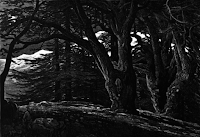Table of Contents (clickable)
Throughout this post Canaanite = Phoenician. Greeks called them Phoenicians, Hebrews called the same Canaanites.
Child Sacrifice
Child Sacrifice - General All Cultures
-
https://en.wikipedia.org/wiki/Child_sacrifice
- The practice of child sacrifice among Canaanite groups is attested by numerous sources spanning over a millennium.
- Rabbi A.I. Kook, first Chief Rabbi of Israel, stressed that the climax of the story, commanding Abraham not to sacrifice Isaac, is the whole point: to put an end to, and God's total aversion to the ritual of child sacrifice. According to Irving Greenberg the story of the binding of Isaac, symbolizes the prohibition to worship God by human sacrifices, at a time when human sacrifices were the norm.
Child Sacrifice - Phoenician Section
- Ancient Carthaginians really did sacrifice their children -University of Oxford News
- What we are saying now is that the archaeological, literary, and documentary evidence for child sacrifice is overwhelming.
- If we accept that child sacrifice happened on some scale, it begins to explain why the colony was founded in the first place. Perhaps the reason the people who established Carthage and its neighbours left their original home of Phoenicia was because others there disapproved of their unusual religious practice.
- Carthage tophet
- ...feature of the site is its dual function: votive (stelae dedicated to Ba'al Hammon or Tanit) and funerary (funerary stelae).
- Homesick Phoenicians Imported Plants, Animals to New Sicilian Island Home 3,000 Years Ago
- ...the island is littered with votive offerings and burials of sacrificed humans. In the Tophet alone (the sanctuary devoted to burying the incinerated remains of children, apparently sacrificed) .. more than 2,000 urns and stelas were found.
Child Sacrifice - New World Section
- Human sacrifice in pre-Columbian cultures -Wikipedia
...infant sacrifice would occur to satisfy supernatural beings who would have eaten the souls of more powerful people.
...if sacrifices were not given ... the rain would not come and their crops would not grow.
-
the largest single example of mass child sacrifice [ in world history ] ... identified at least 227 individuals as sacrificial victims ... to appease deities who were supposedly bringing extreme rainfall weather conditions.
Extraction and reduction to these motivations:- rain to come ... crops to grow
WEATHER - prevent extreme rainfall weather conditions
WEATHER - supernatural beings who would have eaten more powerful people
PROTECTING MORE POWERFUL PEOPLE
Child Sacrifice - The Bible
-
"Children Fire" Search in Bible
- [ Jeremiah 19:5 ] They have built the high places of Baal to burn their children in the fire as offerings to Baal—something I did not command or mention, nor did it enter my mind.
- [ 2 Chronicles 28:3 ] He burned sacrifices in the Valley of Ben Hinnom and sacrificed his children in the fire, engaging in the detestable practices of the nations the Lord had driven out before the Israelites.
- "Baal" Search in Bible
When God Stopped The Sacrifice of Isaac - The Bible
-
Genesis Chapter 22 -Bible
Abraham built an altar there and arranged the wood on it. He bound his son Isaac and laid him on the altar, on top of the wood. 10 Then he reached out his hand and took the knife to slay his son. But the angel of the Lord called out to him from heaven, “Abraham! Abraham!”
“Here I am,” he replied.
“Do not lay a hand on the boy,” he said. “Do not do anything to him. Now I know that you fear God, because you have not withheld from me your son, your only son.”
- Contrast this with "The practice of child sacrifice among Canaanite groups is attested by numerous sources spanning over a millennium". At this moment there was a new way that had been forged. A distinctive group with distinctive values separate from their general Canaanites/Semitic race. It was not a new race, but a new relationship with diety and within their own families and society. God stopping the sacrifice was a revolution.
But Why?
Time for a short intermission from all these references to history, archeology, and religious texts. We need to ground ourselves in some common sense about this long history.
Why would these people -all of them are Semitic and living in the land of Canaan- why would any of them placate a diety with child sacrifice?
In Egypt and Mesopotamia the cultures are centered around and dependant on irrigation. Their dieties are about those dependencies. Once the people left Egypt and Mesopotamia and forged out into the areas without irrigation, they depended more on rain. And rain deities.
It all starts with a rain dependent region, and a people afraid of drought that would mean extinction of at least their family if not the whole local population. It begins in people's innerselves living in fear, and wanting to placate what they perceive as a mean and angry weather god. It grows into an inertia of tradition, pageantry of rituals, and... a culture. A very hard habit to kick.
The essence of this blog post is to present an arc of the Bible as a less-than-that-mean God trying to make a people kick this horrendous habit.
Jesus visits Tyre
In the travels and ministry of Jesus there is an account of his visit to the famous Phoenician city of Tyre. It is the only time during his ministry years when he is not in Israel, and thoroughly in a city of Gentiles (people outside of the then Hebrew concept of the chosen people). Near every Bible lesson on this account emphasizes this is the moment Jesus demonstrates to his disciples that his blessings can be given to the Gentiles. It is seen by most as a major leap in who can be God's people.
I want to emphasize something else. Keep in mind the history of child sacrifice peculiar to Canaanites from that divergent moment when Abraham didn't sacrifice, the division between Baal worshipping (child sacrifice) Canaanites of Phoenicia and God of Moses Canaanites that we call Hebrews. Also keep in mind Tyre as one of the most important cities of the ancient Levant, a port of world trade, a fundamental center of Phoenician culture [ Part One of this blog entry ]. With all that let's see the NIV version of Mark 15 verses 21-28 for the Biblical account of Jesus in Tyre talking to a Phoenician woman.
Mark 15 verses 21-28
- Leaving that place, Jesus withdrew to the region of Tyre and Sidon. A Canaanite woman from that vicinity came to him, crying out, “Lord, Son of David, have mercy on me! My daughter is demon-possessed and suffering terribly.”
- Jesus did not answer a word. So his disciples came to him and urged him, “Send her away, for she keeps crying out after us.”
- He answered, “I was sent only to the lost sheep of Israel.”
- The woman came and knelt before him. “Lord, help me!” she said.
- He replied, “It is not right to take the children’s bread and toss it to the dogs.”
- “Yes it is, Lord,” she said. “Even the dogs eat the crumbs that fall from their master’s table.”
- Then Jesus said to her, “Woman, you have great faith! Your request is granted.” And her daughter was healed at that moment.
Let's extract some elements out of the account.
- Tyre: Major Port City of Phoenician World Trade
- Dogs
- Daughter...that is sick in a cultural history of child sacrifice.
Dogs. All that I can find on Hebrews and Phoenicians of that time lends towards Jews not owning dogs and Phoenicians did. [ Judaism and Dogs ]. I welcome your researching this to infinity, but here is what I see.
The Canaanites divided into child sacrificing dog owning Phoenicians, and non-child-sacrificing no-dog owning Jews. Think of families and availability of food. One culture has families that proiritized feeding their children very much first. Another preferred the prestige or whatever other motivations of dog ownership while there was less emotional attachment to children, who were sacrificed.
The dialog between the Phoenician woman and Jesus, the reference to dogs has several miles of depth. She declares a break from her cultural past by saying food should be for children first. In showing this, she is showing that there are Phoenicians who have progressed in their inner values and broken with their historical legacy beliefs and more importantly lived priorities.
There are aspects of Baal worship connected to canines, and to the Biblical story of Jezebel. See: [ Baal, Dogs and Jezebel ]
Jesus saw that these Phoenicians of Tyre are no longer a kind of people that would child sacrifice.
Tack on to this the more obvious valuing of the Phoencian woman's daughter. The forefront of the whole scene is her love of her daughter and wanting her daughter to survive some mental/physical travesty and become well, and live.
In every way this is Jesus evaluating people who have a history of child sacrifice, and through elements of the conversation and the whole context can see that at least this one, and by extension the norms of her the locals she socially belongs to, are no longer the monsters they once were.
Please consider supporting this blog by purchasing my books on Amazon.



.jpeg)


.jpeg)


